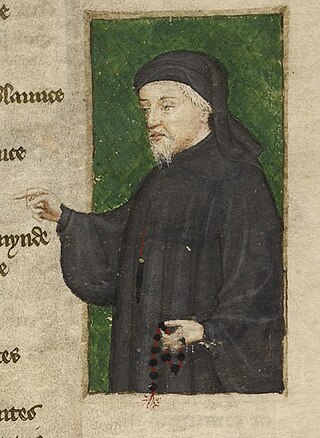
Geoffrey Chaucer was an English poet, author, and civil servant best known for The Canterbury Tales. He has been called the "father of English literature", or, alternatively, the "father of English poetry". He was the first writer to be buried in what has since come to be called Poets' Corner, in Westminster Abbey. Chaucer also gained fame as a philosopher and astronomer, composing the scientific A Treatise on the Astrolabe for his 10-year-old son, Lewis. He maintained a career in the civil service as a bureaucrat, courtier, diplomat, and member of parliament.
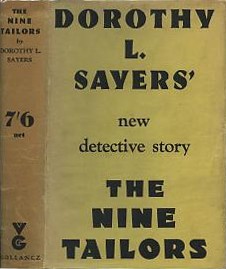
The Nine Tailors is a 1934 mystery novel by the British writer Dorothy L. Sayers, her ninth featuring Lord Peter Wimsey. The story is set in the Lincolnshire Fens, and revolves around a group of bell-ringers at the local parish church. The book has been described as Sayers' finest literary achievement, although not all critics were convinced by the mode of death, nor by the amount of technical campanology detail included.
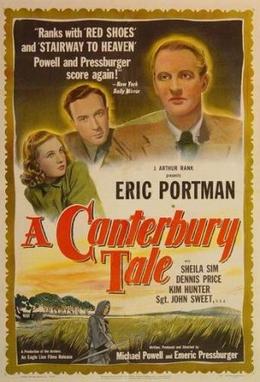
A Canterbury Tale is a 1944 British film by Michael Powell and Emeric Pressburger starring Eric Portman, Sheila Sim, Dennis Price and Sgt. John Sweet; Esmond Knight provided narration and played two small roles. For the post-war American release, Raymond Massey narrated and Kim Hunter was added to the film. The film was made in black and white, and was the first of two collaborations between Powell and Pressburger and cinematographer Erwin Hillier.

Edmund Crispin was the pseudonym of Robert Bruce Montgomery, an English crime writer and composer known for his Gervase Fen novels and for his musical scores for the early films in the Carry On series.

Hexham Abbey is a Grade I listed church dedicated to St Andrew, in the town of Hexham, Northumberland, in the North East of England. Originally built in AD 674, the Abbey was built up during the 12th century into its current form, with additions around the turn of the 20th century. Since the dissolution of the monasteries in 1537, the Abbey has been the parish church of Hexham. In 2014 the Abbey regained ownership of its former monastic buildings, which had been used as Hexham magistrates' court, and subsequently developed them into a permanent exhibition and visitor centre, telling the story of the Abbey's history.

Liverpool Cathedral is a Church of England cathedral in the city of Liverpool, England. It is the seat of the bishop of Liverpool and is the mother church of the diocese of Liverpool. The church may be formally referred to as the Cathedral Church of Christ in Liverpool. It is the largest cathedral and religious building in Britain, and the eighth largest church in the world.

Priory Church of St Mary, Bridlington, grid reference TA177680, commonly known as Bridlington Priory Church is a parish church in Bridlington, East Riding of Yorkshire, England, in the Diocese of York. It is on the site of an Augustinian priory founded in 1113 which was dissolved during the Dissolution of the Monasteries. In 1951 it was designated a Grade I Listed Building.

The Canterbury Tales is a 1972 medieval erotic black comedy Italian film directed by Pier Paolo Pasolini based on the medieval narrative poem by Geoffrey Chaucer. The second film in Pasolini's "Trilogy of Life", preceded by The Decameron and followed by Arabian Nights, it won the Golden Bear at the 22nd Berlin International Film Festival.
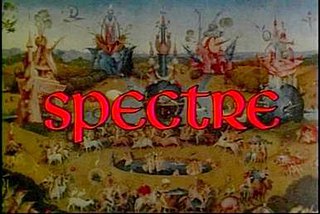
Spectre is a 1977 British made-for-television horror film produced by Gene Roddenberry. It was co-written by Roddenberry and Samuel A. Peeples, and directed by Clive Donner. It was one of several unsuccessful pilots created by Roddenberry, and one of several pilots in the 1970s in the occult detective subgenre. The pilot follows the adventures of William Sebastian, a former criminologist and occult expert, and his colleague, Dr. "Ham" Hamilton, a physician and forensic pathologist, as they visit the United Kingdom to investigate a case involving the aristocratic Cyon family. The cast includes John Hurt, James Villiers, Gordon Jackson, Ann Bell, and Majel Barrett.

The Quiet Gentleman is a Regency novel by Georgette Heyer, published at the start of 1951 by William Heinemann Ltd. Set in the spring of 1816, after the Battle of Waterloo, it is the story of the return home from the wars of the Seventh Earl of St Erth to claim his inheritance. The novel incorporates elements of the mystery story as well as the classic romance.
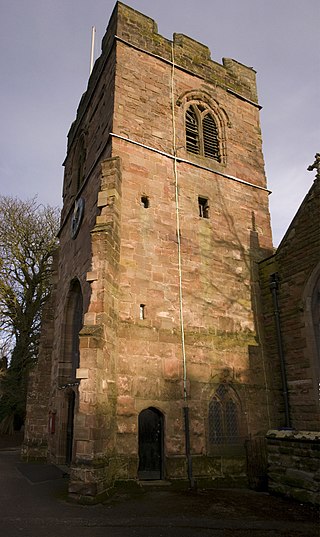
Saint Peter's is the ancient parish church of Harborne, Birmingham, England.

Leeds Minster, also known as the Minster and Parish Church of Saint Peter-at-Leeds is the minster church of Leeds, West Yorkshire, England. It stands on the site of the oldest church in the city and is of architectural and liturgical significance. A church is recorded on the site as early as the 7th century, although the present structure is a Gothic Revival one, designed by Robert Dennis Chantrell and completed in 1841. It is dedicated to Saint Peter and was the Parish Church of Leeds before receiving the honorific title of "Minster" in 2012. It has been designated a Grade I listed building by Historic England.
Events from the 1610s in England.
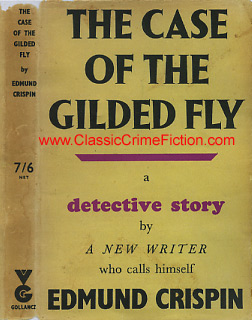
The Case of the Gilded Fly is a locked-room mystery by the English author Edmund Crispin, written while Crispin was an undergraduate at Oxford and first published in the UK in 1944. It was published in the US a year later under the title Obsequies at Oxford.
Geoffrey Peter Annas is a British retired Anglican bishop who served as the area Bishop of Stafford in the Church of England.
Sir Richard Lyons (1310–1381) was a prosperous City of London merchant, financier, and property developer, who held a monopoly on the sale of sweet wine in London, during the 14th century. He was a Privy Counsellor, an Alderman of the City, and a member of the Worshipful Company of Vintners, and served as both as Sheriff of London and MP for Essex.

George Albert Cooke was a British Anglican clergyman and academic. He held two senior chairs at the University of Oxford: Oriel Professor of the Interpretation of Holy Scripture from 1908 to 1914, and Regius Professor of Hebrew from 1914 to 1936.
Amanda Kirstine Ford is a British Anglican priest who has served as Dean of Bristol since 3 October 2020.













